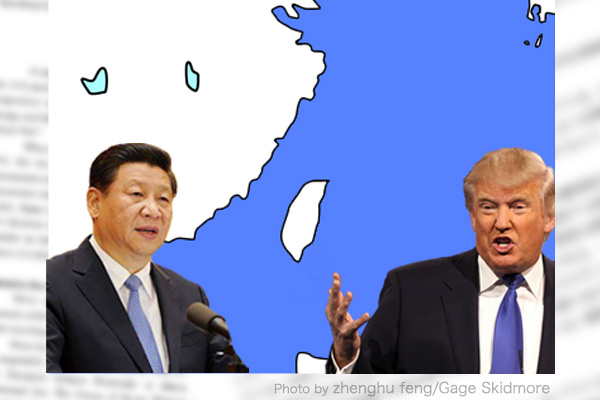On March 27, U.S. President Donald Trump and Chinese President Xi Jinping in a telephone call agreed to work together to defeat the new coronavirus pandemic. Even in the presence of the pandemic as a common threat to the two countries, however, they are escalating military confrontation over Taiwan and the South China Sea. We must see U.S.-China relations from multiple perspectives without being dazzled by their immediate cooperation.
Military tensions growing near Taiwan
The Taipei Times, a Taiwanese English newspaper, on March 18 reported that Chinese Air Force J-11 fighters and KJ-500 early warning and control aircraft flew for the first nighttime exercises near Taiwan’s air defense identification zone and were driven away by Taiwanese Air Force F-16 fighters.
On March 20, the Global Times affiliated with the Chinese Communist Party organ People’s Daily reported that a missile destroyer and two frigates of the Chinese Navy appeared some 80 nautical miles southeast from Miyakojima Island of Japan’s Okinawa Prefecture, accompanied by a supply ship.
On the same day, the Taiwan News, another Taiwanese English newspaper, reported that more than 10 Chinese speedboats attacked Taiwanese Coast Guard cutters.
On March 24, the U.S.’ Radio Free Asia reported that China moved maritime militia around the disputed Spratly Islands in the South China Sea.
On March 27, China Coast Guard ships were identified as passing through waters near Japan’s Senkaku Islands in the East China Sea for the 22nd straight day.
The U.S. has not ignored these Chinese moves. The U.S. Navy’s missile destroyer McCampbell conducted a freedom of navigation operation within 12 nautical miles from the China-claimed Paracel Islands in the South China Sea on March 10 and passed through the Taiwan Strait on Mach 26.
On March 22, the U.S.’ Wall Street Journal carried a scoop story reporting that the U.S. Marine Corps plans to bottle up the Chinese fleet in the South and East China Seas in time of emergency by landing on small islands in the seas to attack the Chinese fleet while hopping from island to island to avoid retaliatory People’s Liberation Army (PLA) attacks.
U.S. TAIPEI Act signed into law
Meanwhile, U.S. President Trump signed the Taiwan Allies International Protection and Enhancement Initiative (TAIPEI) Act into law on March 26 after the House and Senate unanimously approved the measure to prevent Taiwan from being diplomatically isolated. Given that countries have increasingly severed diplomatic ties with Taiwan under Chinese pressure, the act requires the U.S. administration to revisit relations with countries undermining Taiwan’s security and prosperity and support Taiwan’s participation in international organizations.
On March 25, an American Enterprise Institute fellow released an article providing a near future scenario --- as the first among four possible scenarios --- in which President Xi would see Taiwan as an appetizing target to divert attention externally and unify the Communist Party if there is a second new coronavirus outbreak.
Two U.S. aircraft carriers in the western Pacific are no longer operational with crewmembers testing positive to the new coronavirus, indicating that China could have a free hand in the region.
While Japan is dominated by coronavirus news, U.S.-China conflicts are tense in the Taiwan Strait, the South China Sea and waters around Okinawa. “Be alert on the left and watch on the right,” says a catchphrase of the Japanese Imperial Navy. We must be prepared for complex crises.
Fumio Ota is a senior fellow and a Planning Committee member at the Japan Institute for National Fundamentals. He is a retired Vice Admiral of Japan’s Maritime Self-Defense Force.


